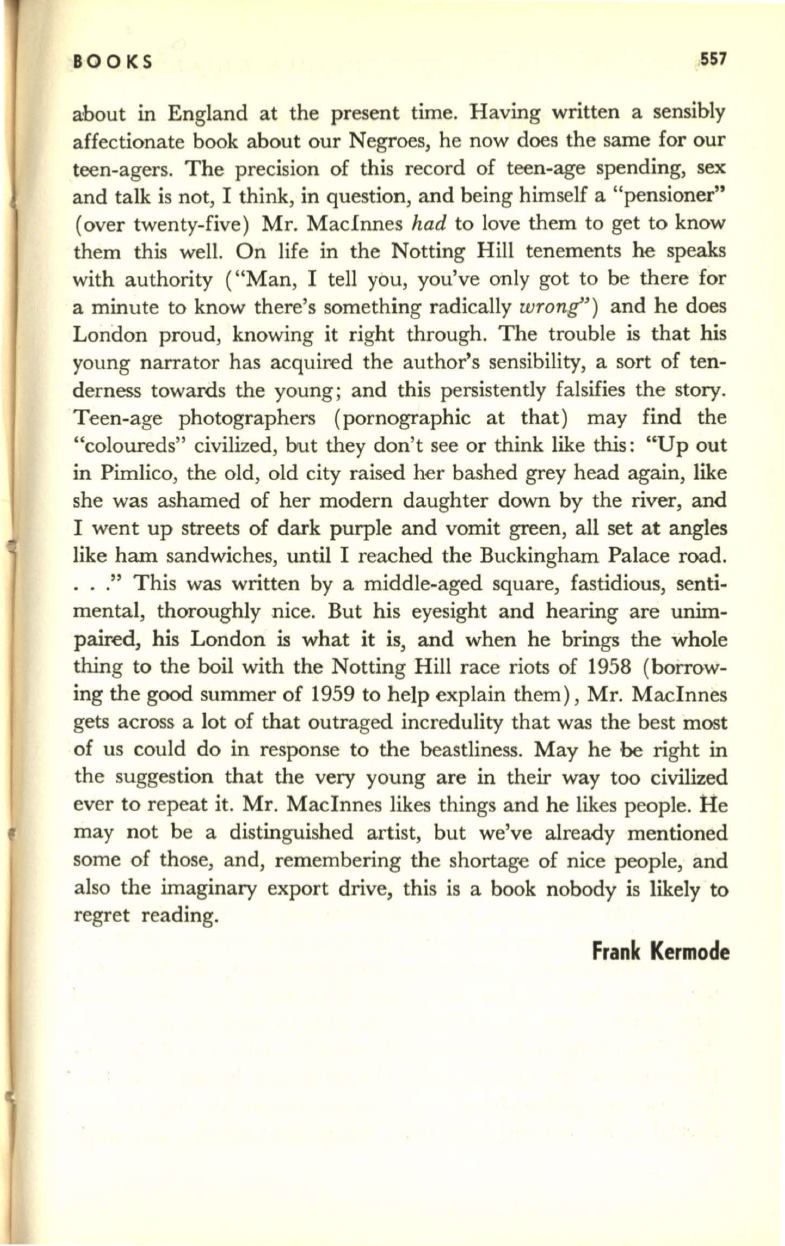
BOOKS
.557
about in England at the present time. Having written a sensibly
affectionate book about our Negroes, he now does the same for our
teen-agers. The precision of this record of teen-age spending, sex
and talk is not, I think, in question, and being himself a "pensioner"
(over twenty-five) Mr. Macinnes
had
to love them to get to know
them this well. On life in the Notting Hill tenements he speaks
with authority ("Man, I tell you, you've only got to be there for
a minute to know there's something radically
wrong")
and he does
London proud, knowing it right through. The trouble is that his
young narrator has acquired the author's sensibility, a sort of ten–
derness towards the young; and this persistently falsifies the story.
Teen-age photographers (pornographic at that) may find the
"coloureds" civilized, but they don't see or think like this: "Up out
in Pimlico, the old, old city raised her bashed grey head again, like
she was ashamed of her modern daughter down by the river, and
I went up streets of dark purple and vomit green, all set at angles
like ham sandwiches, until I reached the Buckingham Palace road.
. . ." This was written by a middle-aged square, fastidious, senti–
mental, thoroughly nice. But his eyesight and hearing are unim–
paired, his London
is
what it is, and when he brings the whole
thing to the boil with the Notting Hill race riots of 1958 (borrow–
ing the good summer of 1959 to help explain them), Mr. MacInnes
gets across a lot of that outraged incredulity that was the best most
of us could do in response to the beastliness. May he
be
right in
the suggestion that the very young are in their way too civilized
ever to repeat it. Mr. MacInnes likes things and he likes people. He
may not be a distinguished artist, but we've already mentioned
some of those, and, remembering the shortage of nice people, and
also the imaginary export drive, this is a book nobody is likely to
regret reading.
Frank Kermode


